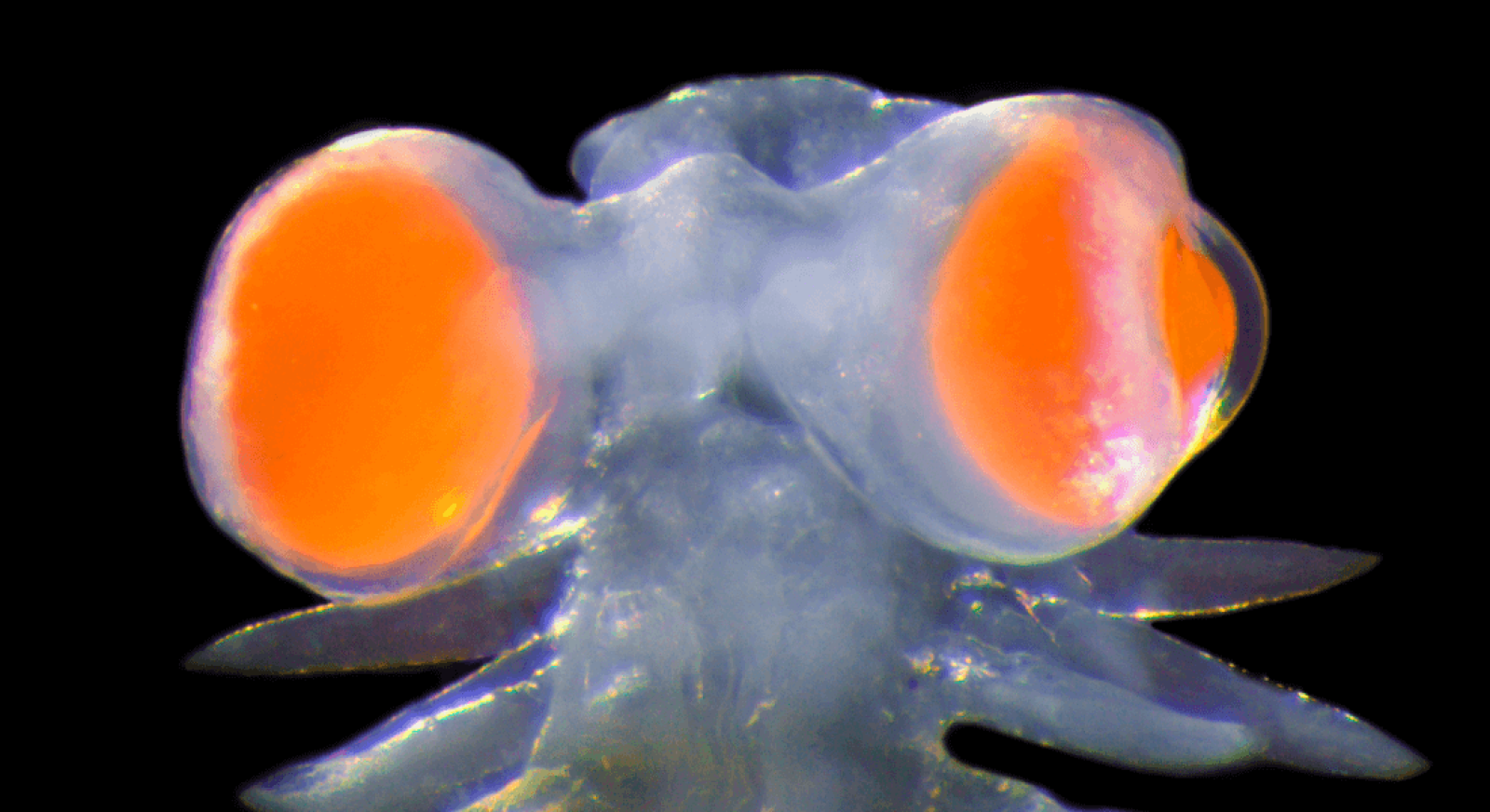This tiny worm has huge eyes: why?
Published by Cédric - Friday, April 19, 2024 - Other Languages: FR, DE, ES, PT
Article Author: Cédric DEPOND
Source: Current Biology
Article Author: Cédric DEPOND
Source: Current Biology
Follow us on Google News (click on ☆)
The abysses of the Mediterranean hide unsuspected mysteries, one of which is the tiny dweller of the depths: the polychaete worm Vanadis formosa. This annelid worm stands out due to its enormous eyes, which defy all logic, being so large that they weigh twenty times more than the rest of its head. Biologists from the University of Copenhagen and Lund University have recently taken a close look at these unique visual organs, unveiling surprising discoveries.

The Vanadis formosa, nicknamed the Vanadis worm, inhabits the waters near the Italian island of Ponza. Its body is transparent except for its eyes, presenting an evolutionary puzzle. Why would a nocturnal animal need such imposing eyes? Anders Garm, from the University of Copenhagen, points out: "It's really interesting because such capability is typically reserved for vertebrates, arthropods (insects, spiders, etc.), and cephalopods (octopuses, squids). This is the first time such advanced and detailed vision has been demonstrated beyond these groups."
The scientists have established that the Vanadis has exceptional vision, comparable to that of mammals and cephalopods. Even more astonishing, it can perceive ultraviolet (UV) light, invisible to our eyes. This unique ability might be used for communication or finding partners.
Michael Bok, co-author of the study, states: "Together, we sought to unravel the mystery of the evolution of a transparent, almost invisible worm that feeds in the heart of the night and is equipped with huge eyes." Why such an evolutionary investment in night vision? The researchers put forward the fascinating hypothesis of bioluminescent communication, exploiting UV light as a secret language related to mating.
This discovery also sheds light on research in robotics. The eyes of the Vanadis could inspire new technological advancements. Anders Garm explains: "With robotics engineers, we are trying to understand how animals with a brain as simple as this one can process all the information that such large eyes are likely to collect."
The extraordinary vision of the Vanadis formosa opens new perspectives on the evolution of eyes and arouses researchers' wonder. In the Mediterranean abysses, this tiny marine worm thus reveals great secrets about the complexity of nature.
An expanding corrosive zone in the ocean
23 hours ago
Why do roses have thorns?
1 day ago
Did cooking make us human?
2 days ago
Can overthinking cause suffering?
3 days ago
Remote brain manipulation is now possible
7 days ago
A strategy to overcome leukemia
9 days ago
More...